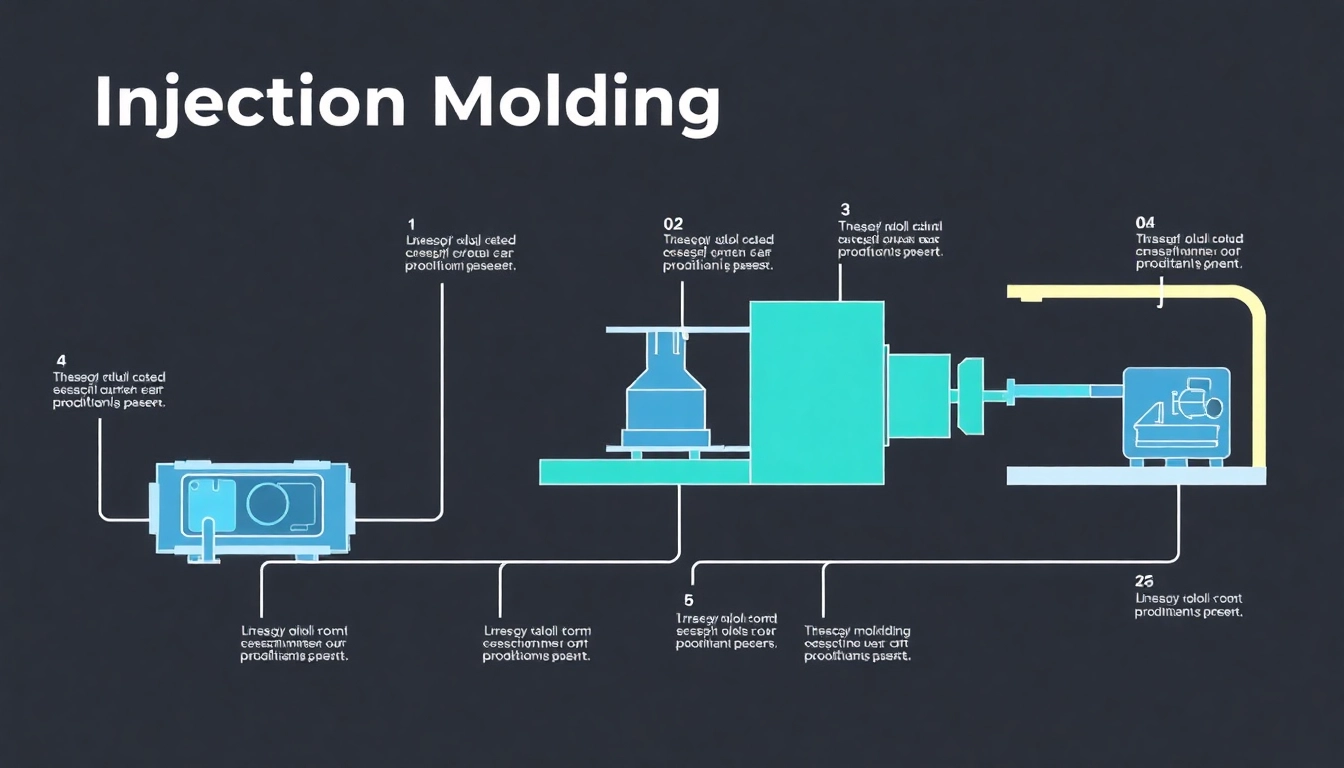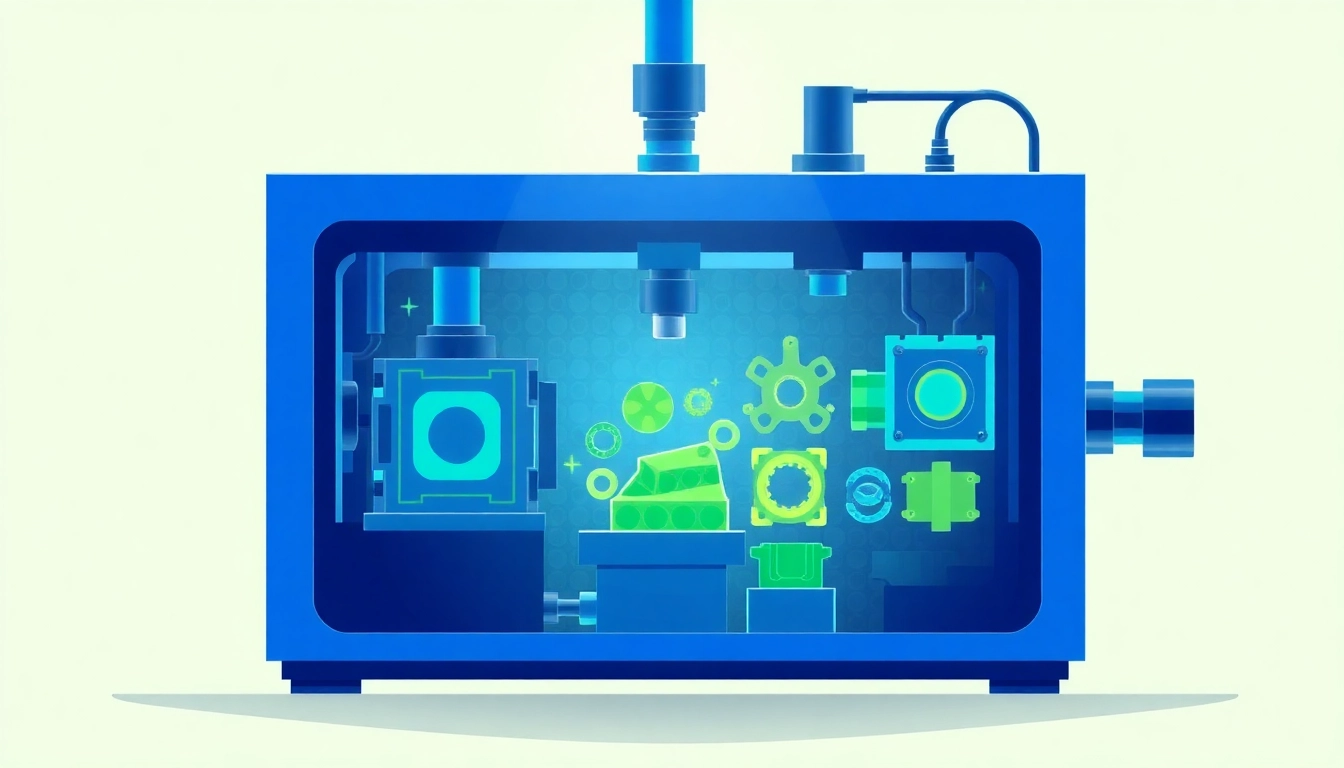Introduction to Injection Molding
Injection molding is a crucial manufacturing process used to produce a wide range of plastic parts and products with precision and efficiency. By injecting molten material into a mold and then allowing it to cool and solidify, manufacturers can create complex shapes that are both durable and manufactured at scale. This article will explore the intricacies of the injection molding process, its applications, advantages, challenges, and innovations in technology. Whether you are a manufacturing professional or simply curious about how everyday items are produced, a deeper understanding of injection molding can enhance your knowledge and appreciation of this essential technique.
What is Injection Molding?
Injection molding is a manufacturing technique that involves the injection of molten materials into a mold to create parts and products. The process is highly efficient and allows for mass production of identical pieces with minimal waste. Various materials can be used for injection molding, including various types of plastics, metals, glasses, and elastomers. The choice of material often depends on the required properties of the final product, including strength, flexibility, and temperature resistance.
History and Evolution of Injection Molding
The roots of injection molding can be traced back to the early 19th century, around 1820, when the first patent for an injection molding machine was filed by Elias Howe, who is also known for his invention of the sewing machine. This initial machine utilized a hand-cranked operation to inject material into molds. Over the decades, the technology has evolved significantly, with the introduction of electric machines, improved materials, and advanced control systems, enhancing both the speed and quality of production.
By the mid-20th century, the spread of thermoplastic materials revolutionized the industry, allowing for greater flexibility in design and application. Today, injection molding is not only a staple in the production of everyday items but also plays a significant role in industries ranging from automotive to medical devices and consumer goods.
Applications and Benefits of Injection Molding
Injection molding enjoys widespread use across various industries due to its ability to produce consistent, high-quality parts in large volumes. Common applications include:
- Consumer Products: Items like containers, toys, and electronics often utilize injection-molded parts.
- Automotive Components: Injection molding is heavily used for manufacturing parts such as dashboards, brackets, and bumpers.
- Medical Devices: Precision components such as syringes, inhalers, and surgical instruments benefit from the accuracy of injection molding.
- Packaging: Bottles, lids, and caps are commonly produced through injection molding techniques.
The key benefits of injection molding include:
- High Efficiency: The process is highly efficient, allowing for the rapid production of complex parts.
- Consistency: Injection molding provides uniform parts with minimal variation.
- Low Waste: The ability to recycle unused material and the precision of the molds means less waste is generated compared to other production methods.
- Design Versatility: Advanced computer-aided design (CAD) software allows for innovative designs that were previously impossible to manufacture.
The Injection Molding Process Explained
Stages of the Injection Molding Cycle
The injection molding process consists of several stages that work together to create a finished product. Understanding these stages is crucial for optimizing production and maintaining quality:
- Clamping: The mold is securely closed using a clamping unit to prepare for injection.
- Injection: Molten plastic is injected into the mold cavity under high pressure.
- Cooling: The material cools and solidifies, taking the shape of the mold.
- Ejection: Once cooled, the mold opens, and ejection pins push the finished part out of the mold.
Equipment and Machinery Used
Injection molding requires specific machinery and equipment to perform efficiently. The main components include:
- Injection Molding Machine: This machine includes a hopper for feeding resin, a barrel where the resin is heated and melted, and a nozzle that injects the melted material into the mold.
- Molds: Customized molds are created to shape the parts being produced. Molds can be single or multi-cavity, depending on production needs.
- Cooling Systems: These systems help to control the temperature of the molds during the injection process, enhancing production rates and quality.
- Control Systems: Modern injection molding machines often include computerized control systems for precise monitoring and adjustment of the molding process.
Common Materials for Injection Molding
Various materials are suitable for injection molding, and the choice impacts the properties of the end product. Common materials include:
- Thermoplastics: The most widely used materials, which can be reheated and remolded. Examples include ABS, polypropylene (PP), and polystyrene (PS).
- Thermosetting Plastics: These materials form irreversible chemical bonds during the curing process and cannot be remelted. Examples include epoxies and phenolic resins.
- Elastomers: Used for applications requiring flexibility, such as rubber products.
Challenges in Injection Molding
Identifying Common Defects
While injection molding is a highly efficient process, it is not without its challenges. Common defects that can occur during production include:
- Warpage: This occurs when parts lose their shape during cooling due to uneven thermal gradients.
- Sink Marks: Indentations that occur in thicker sections of the molded parts due to uneven cooling patterns.
- Flash: Excess material that seeps out from between the mold halves.
- Bubbles: Air trapped within the molten material, leading to flaws in the final product.
Solutions for Quality Control
Ensuring quality control during injection molding involves the implementation of robust processes and inspections. Solutions include:
- Regular Maintenance: Keeping machinery in optimal condition reduces defects.
- Mold Design Improvements: Implementing better cooling channels and mold design can prevent issues such as warpage.
- Material Selection: Choosing the appropriate materials can enhance structural integrity and reduce the risk of defects.
Reducing Production Waste
Strengthening the sustainability of the injection molding process is increasingly important. Strategies for reducing production waste include:
- Recycling Scrap Material: Collecting and reprocessing scrap material for use in future production.
- Optimizing Designs: Reducing excess material usage through efficient design can minimize waste.
- Improving Process Efficiency: Streamlining the production cycle helps lower energy consumption and waste by ensuring throughput matches demand.
Innovations in Injection Molding Technology
Advancements in Machinery
Continuous advancements in injection molding machinery have greatly enhanced production capabilities. Recent developments include:
- Electric Injection Molding Machines: Offering precise control and energy efficiency compared to hydraulic machines.
- Hybrid Machines: Combining electric and hydraulic features, these machines optimize speed while providing power.
- Advanced Robotics: Increased automation in handling parts improves both safety and efficiency in the production line.
Trends in Materials Science
The field of materials science is evolving with new formulations that enhance performance characteristics. Trends include:
- Biodegradable Plastics: Development of materials such as polylactic acid (PLA) for sustainable applications.
- Composite Materials: Use of composite plastics for added strength while maintaining lightweight qualities.
- Smart Materials: Innovations in materials that can respond to environmental changes, enhancing product functionality.
Impact of Automation on Production
Automation is transforming the injection molding industry by speeding up processes, reducing labor costs, and enhancing precision. The utilization of advanced software for predictive maintenance, real-time monitoring, and quality assurance is becoming standard. Additionally, automated systems assist in the integration of the entire production line, reducing turnaround times and improving output quality.
Choosing the Right Injection Molding Partner
What to Look for in a Manufacturer
Selecting the right injection molding partner is critical to ensuring the quality and efficiency of production. Key considerations include:
- Experience: Look for manufacturers with extensive experience in your industry’s specific requirements.
- Capacity: Assess whether the manufacturer can handle your production volume and deadlines.
- Quality Control Processes: Ensure they have strong quality control measures in place to minimize defects.
Understanding Customization Options
Customization is vital for creating unique parts tailored to specific needs. Discuss customization capabilities such as:
- Mold Design: The flexibility to create molds for unique shapes and functions.
- Material Selection: Access to a range of materials that can be customized according to product specifications.
- Finish Options: Different texturing and finishing options for aesthetic purposes.
Evaluating Cost and Production Time
Understanding the cost structures and production timelines of potential partners is crucial for project planning. For best results, consider:
- Cost of Materials: Material prices can fluctuate, impacting overall costs.
- Production Lead Times: Understand how long it will take from mold creation to delivery of the finished product.
- Design Adjustments: Consider how changes in design can affect both costs and timelines.



